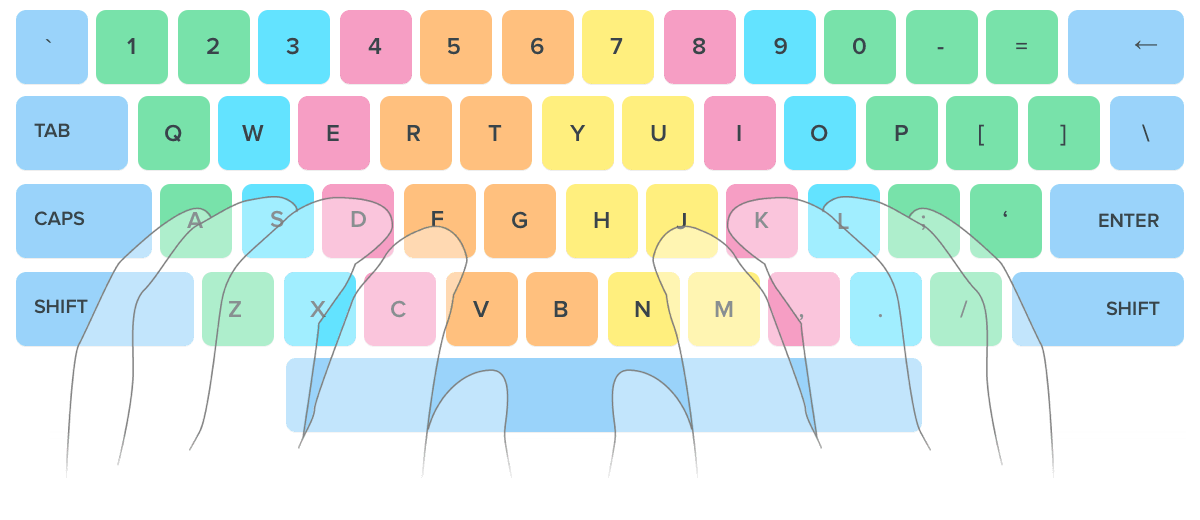MeriTyping
Yes
All
money
in
the
world
will
not
give
you
satisfaction
and
prestige
as
the
education
can.
Women
were
enslaved
and
looked
down
upon
due
to
the
lack
of
education.
As
they
become
literate
the
outlook
of
the
society
improved.
In
fact,
if
you
want
to
move
within
the
certain
segment
of
the
people,
it
is
important
to
be
qualified
or
get
a
certain
level
of
education.
Superstitions
have
percolated
to
every
part
of
the
society
with
people
blindly
following
them
without
any
scientific
base.
They
have
existed
since
ancient
times,
however,
educated
person
questions
the
age
old
customs
and
practices.
He
doesn't
follow
the
rituals
blindly
because
change
is
the
name
of
the
game
on
the
planet.
At
the
time
of
independence
India
was
bequeathed
with
a
shattered
economy,
widespread
illiteracy
and
shocking
poverty.
The
entire
politico
economics
structure
has
to
be
reconstructed
for
genuine
development
of
the
country.
Contemporary
economists
divide
this
story
of
India's
politico
economic
growth
into
three
phases,
first
phase
being
the
45
years
after
independence
and
then
the
decades
from
1990s
is
called
the
second
phase
when
the
idea
of
free
market
economy
was
introduced
and
currently
we
are
in
the
third
generation
reforms
where
existing
measures
are
scaled
up
and
new
delivery
mechanisms
are
being
created.
If
these
were
the
successes
the
major
failure
was
the
growth
rate
in
national
income
was
very
slow,
particularly
in
per
capita
income.
A
colossal
and
highly
inefficient
public
sector
became
a
drain
on
the
resources
mobilized
by
the
government.
There
was
rampant
corruption,
both
political
and
bureaucratic;
some
of
this
corruption
flowed
from
the
regulatory
structure
of
the
economy,
particularly
the
nightmarish
maze
of
controls
and
regulations
that
the
government
imposed.
The
sluggish
growth
could
not
match
the
growing
aspirations
of
the
upcoming
subordinate
groups
and
created
a
chasm
between
the
political
and
the
economic
development.
The
political
mobilizations
gave
rise
to
aspirations
of
groups
that
now
came
up
from
below
overcoming
a
long
history
of
social
inequality
and
oppression,
but
the
economy
could
not
match
those
aspirations.
After
the
new
political
shift
when
the
national
government
became
increasingly
depended
on
the
support
of
powerful
regional
parties,
the
economic
reforms
and
fiscal
consolidation
had
a
bearing.
Similarly,
the
tension
between
the
demands
of
the
better-off
states
for
more
competition
and
those
of
other
states
which
are
weaker
clamoring
for
protection
and
to
whom
Centre
can
ill
afford
to
ignore
politically.
The
major
elements
of
changes
in
policy
over
the
de-licensing
and
deregulation
of
investment
and
production,
discontinuation
of
exclusive
reservation
of
many
key
industries,
gradual
abolition
of
quantitative
restrictions
on
imports,
movement
towards
a
market-determined
exchange
rate,
reduction
of
average
levels
of
direct
and
indirect
taxes
and
some
streamlining
and
rationalization
of
the
tax
structure
etc.
It
can
be
safely
said
that
the
first
generation
reforms
were
aimed
at
institution
building
for
macroeconomic
stabilization
and
structural
adjustments.
The
second
generation
reforms
focused
on
liberalization
and
privatization.
Third
generation
a
reform
is
aimed
at
mobilizing
technology,
skill
development
and
creating
knowledge
based
infrastructure.
In
the
third
generation
reforms
the
overall
socio-economic
development
is
designed
for
creating
new
delivery
mechanisms
and
strengthening
existing
measures.
Contemporary
economists
divide
this
story
of
India's
politico
economic
growth
into
three
phases,
first
phase
being
the
45
years
after
independence
and
then
the
decades
from
1990s
is
called
the
second
phase
when
the
idea
of
free
market
economy
was
introduced
and
currently
we
are
in
the
third
generation
reforms
where
existing
measures
are
scaled
up
and
new
delivery
mechanisms
are
being
created.
If
these
were
the
successes
the
major
failure
was
the
growth
rate
in
national
income
was
very
slow,
particularly
in
per
capita
income.
A
colossal
and
highly
inefficient
public
sector
became
a
drain
on
the
resources
mobilized
by
the
government.
There
was
rampant
corruption,
both
political
and
bureaucratic;
some
of
this
corruption
flowed
from
the
regulatory
structure
of
the
economy,
particularly
the
nightmarish
maze
of
controls
and
regulations
that
the
government
imposed.
The
sluggish
growth
could
not
match
the
growing
aspirations
of
the
upcoming
subordinate
groups
and
created
a
chasm
between
the
political
and
the
economic
development.
The
political
mobilizations
gave
rise
to
aspirations
of
groups
that
now
came
up
from
below
overcoming
a
long
history
of
social
inequality
and
oppression,
but
the
economy
could
not
match
those
aspirations.
After
the
new
political
shift
when
the
national
government
became
increasingly
depended
on
the
support
of
powerful
regional
parties
Time Left - 10:00
Don't Highlight mistake Don't Highlight current word
Learn how to touch type
Touch typing is all about the idea that each
finger has its own area on the keyboard. Thanks to that fact you can
type without looking at the keys. Practice regularly and your fingers
will learn their location on the keyboard through muscle memory.
Sitting posture for typing

Sit straight and remember to keep your back straight. Keep your elbows bent at the right angle. Face the screen with your head slightly tilted forward. Keep at least 45 - 70 cm of distance between your eyes and the screen.Еxpose the shoulder, arm, and wrist muscles to the least possible strain. The wrists can touch the tabletop in front of the keyboard. Never shift your body weight to the wrists by resting on them.
Home row position

Curve your fingers a little and put them on the ASDF and JKL; keys which are located in the middle row of the letter keys. This row is called HOME ROW because you always start from these keys and always return to them.
F and J keys under your index fingers should have a raised line on them to aide in finding these keys without looking.
Keyboard scheme

The color-coded keyboard under lesson input field will help you to understand which finger should press each key.
Hit keys only with the fingers for which they have been reserved. Always return to the starting position of the fingers "ASDF – JKL;" When typing, imagine the location of the symbol on the keyboard. Establish and maintain a rhythm while typing. Your keystrokes should come at equal intervals. The SHIFT key is always pressed by the pinky finger opposite to the one hitting the other key. Use the thumb of whichever hand is more convenient for you to press the Space bar.
This method may seem inconvenient at first, but do not stop, eventually, you'll find out that you are typing quickly, easily, and conveniently. To achieve the maximum result, choose a paragraph for your keyboard layout and in the desired language.
Fingers motion

Don't look at the keys when you type. Just slide your fingers around until they find the home row marking. Limit your hand and finger movement only to what is necessary to press a specific key. Keep your hands and fingers close to the base position. This improves typing speed and reduces stress on the hands.
Pay attention to ring fingers and little fingers, since they are considerably underdeveloped.
Typing speed
Do not rush when you just started learning. Speed up only when your fingers hit the right keys out of habit. Take your time when typing to avoid mistakes.The speed will pick up as you progress. Always scan the text a word or two in advance. Pass all typing lessons at Ratatype. It will help you to get above the average typing speed.
Take care of yourself
Take a break if you feel that you get distracted easily and are making a lot of mistakes. It is more productive to come back when you feel refreshed.
Learn how to touch type
Touch typing is all about the idea that each finger has its own area on the keyboard. Thanks to that fact you can type without looking at the keys. Practice regularly and your fingers will learn their location on the keyboard through muscle memory.
Sitting posture for typing

Sit straight and remember to keep your back straight. Keep your elbows bent at the right angle. Face the screen with your head slightly tilted forward. Keep at least 45 - 70 cm of distance between your eyes and the screen.Еxpose the shoulder, arm, and wrist muscles to the least possible strain. The wrists can touch the tabletop in front of the keyboard. Never shift your body weight to the wrists by resting on them.
Home row position

Curve your fingers a little and put them on the ASDF and JKL; keys which are located in the middle row of the letter keys. This row is called HOME ROW because you always start from these keys and always return to them.
F and J keys under your index fingers should have a raised line on them to aide in finding these keys without looking.
Keyboard scheme

The color-coded keyboard under lesson input field will help you to understand which finger should press each key.
Hit keys only with the fingers for which they have been reserved. Always return to the starting position of the fingers "ASDF – JKL;" When typing, imagine the location of the symbol on the keyboard. Establish and maintain a rhythm while typing. Your keystrokes should come at equal intervals. The SHIFT key is always pressed by the pinky finger opposite to the one hitting the other key. Use the thumb of whichever hand is more convenient for you to press the Space bar.
This method may seem inconvenient at first, but do not stop, eventually, you'll find out that you are typing quickly, easily, and conveniently. To achieve the maximum result, choose a paragraph for your keyboard layout and in the desired language.
Fingers motion

Don't look at the keys when you type. Just slide your fingers around until they find the home row marking. Limit your hand and finger movement only to what is necessary to press a specific key. Keep your hands and fingers close to the base position. This improves typing speed and reduces stress on the hands.
Pay attention to ring fingers and little fingers, since they are considerably underdeveloped.
Typing speed
Do not rush when you just started learning. Speed up only when your fingers hit the right keys out of habit. Take your time when typing to avoid mistakes.The speed will pick up as you progress. Always scan the text a word or two in advance. Pass all typing lessons at Ratatype. It will help you to get above the average typing speed.
Take care of yourself
Take a break if you feel that you get distracted easily and are making a lot of mistakes. It is more productive to come back when you feel refreshed.